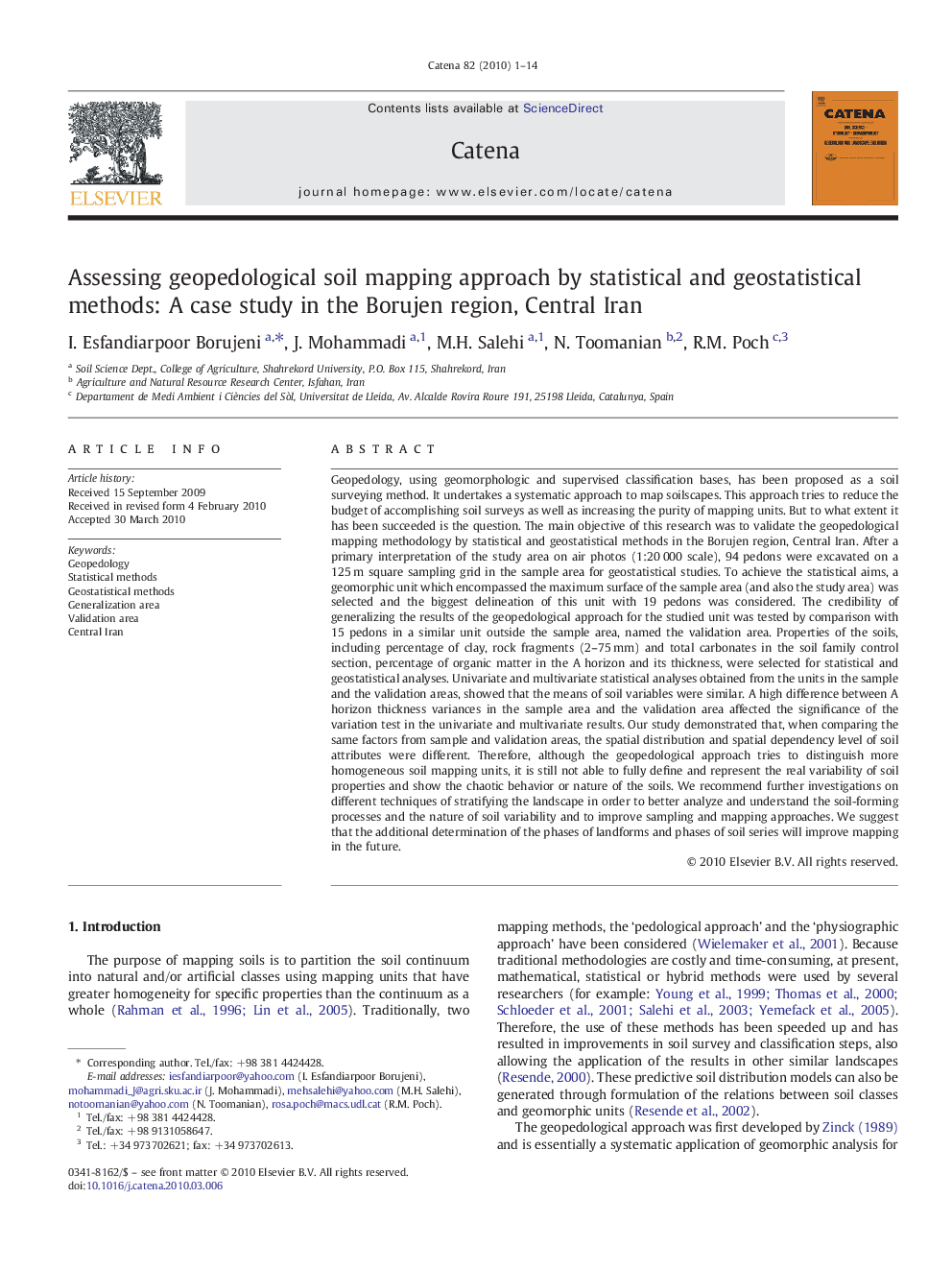| کد مقاله | کد نشریه | سال انتشار | مقاله انگلیسی | نسخه تمام متن |
|---|---|---|---|---|
| 4572051 | 1332146 | 2010 | 14 صفحه PDF | دانلود رایگان |

Geopedology, using geomorphologic and supervised classification bases, has been proposed as a soil surveying method. It undertakes a systematic approach to map soilscapes. This approach tries to reduce the budget of accomplishing soil surveys as well as increasing the purity of mapping units. But to what extent it has been succeeded is the question. The main objective of this research was to validate the geopedological mapping methodology by statistical and geostatistical methods in the Borujen region, Central Iran. After a primary interpretation of the study area on air photos (1:20 000 scale), 94 pedons were excavated on a 125 m square sampling grid in the sample area for geostatistical studies. To achieve the statistical aims, a geomorphic unit which encompassed the maximum surface of the sample area (and also the study area) was selected and the biggest delineation of this unit with 19 pedons was considered. The credibility of generalizing the results of the geopedological approach for the studied unit was tested by comparison with 15 pedons in a similar unit outside the sample area, named the validation area. Properties of the soils, including percentage of clay, rock fragments (2–75 mm) and total carbonates in the soil family control section, percentage of organic matter in the A horizon and its thickness, were selected for statistical and geostatistical analyses. Univariate and multivariate statistical analyses obtained from the units in the sample and the validation areas, showed that the means of soil variables were similar. A high difference between A horizon thickness variances in the sample area and the validation area affected the significance of the variation test in the univariate and multivariate results. Our study demonstrated that, when comparing the same factors from sample and validation areas, the spatial distribution and spatial dependency level of soil attributes were different. Therefore, although the geopedological approach tries to distinguish more homogeneous soil mapping units, it is still not able to fully define and represent the real variability of soil properties and show the chaotic behavior or nature of the soils. We recommend further investigations on different techniques of stratifying the landscape in order to better analyze and understand the soil-forming processes and the nature of soil variability and to improve sampling and mapping approaches. We suggest that the additional determination of the phases of landforms and phases of soil series will improve mapping in the future.
Journal: CATENA - Volume 82, Issue 1, 15 July 2010, Pages 1–14